Menus

Nennewitz
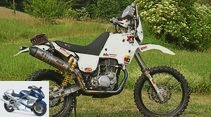
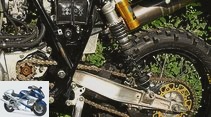
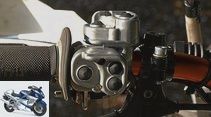
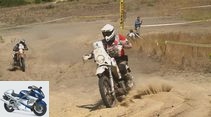
18th photos
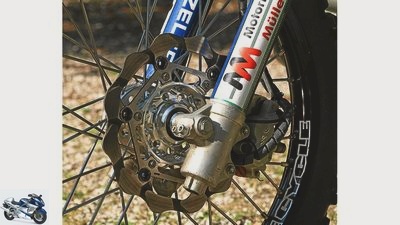
Nennewitz
1/18
The front wheel and brake system of the Rallye-XT 500 come from a modern enduro.
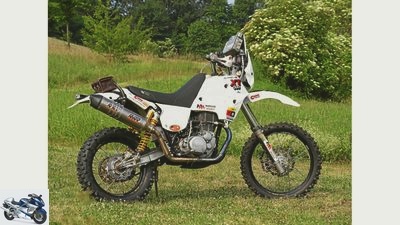
Nennewitz
2/18
Almost finished: The individual parts came together to form a motorcycle, the final coordination work is to harmonize the spring elements.
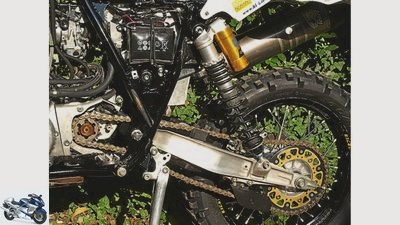
Nennewitz
3/18
The profiled aluminum swing arm from a 1980s Kawa KLX 250. It is supported by high-quality Ohlins twin shocks against a reinforced XT frame.
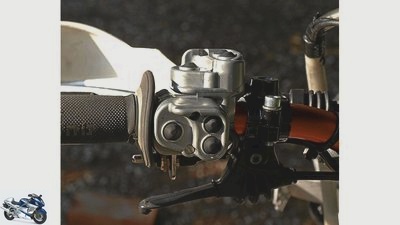
Nennewitz
4/18
The rally instruments are sealed against dirt and water to avoid malfunctions.
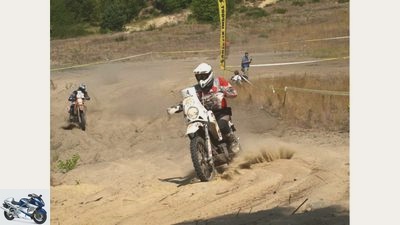
Nennewitz
5/18
In the Dresden-Breslau rally, the XT not only has to work its way through deep water, but also through deep sand.
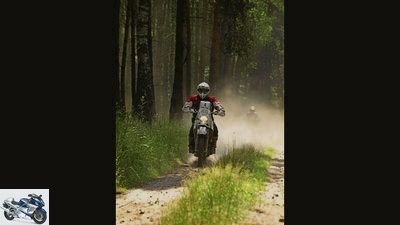
Nennewitz
6/18
The XT 500 holds up easily on gravel roads on forest paths.
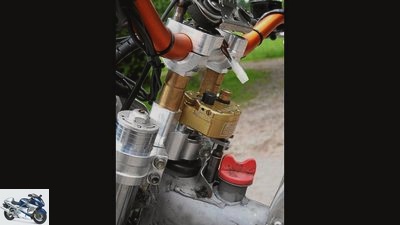
Nennewitz
7/18
Only the finest for the old lady: the vane steering damper from Ohlins.
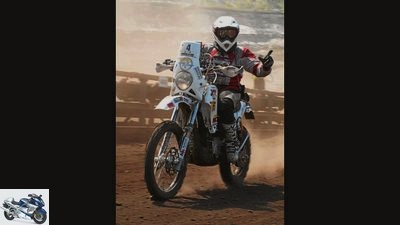
Nennewitz
8/18
The Yamaha XT 500 was actually not a dream bike, but Klaus Nennewitz was impressed by the charm of the XT.
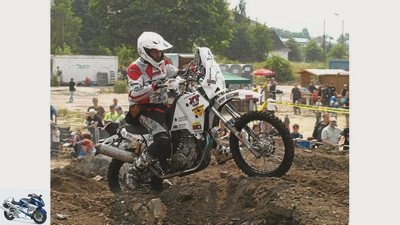
Nennewitz
9/18
The motorcycle designer Klaus Nennewitz set himself the task of building a rally enduro. With a little help and a lot of know-how, he was able to whip his own Yamaha XT 500 over the course at the Breslau-Dresden rally.
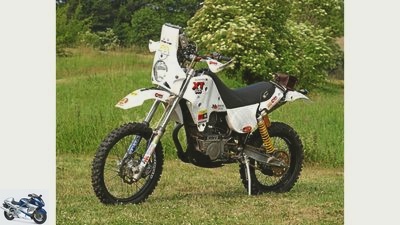
Nennewitz
10/18
The Yamaha XT 500 is clean and nicely arranged and ready for racing.
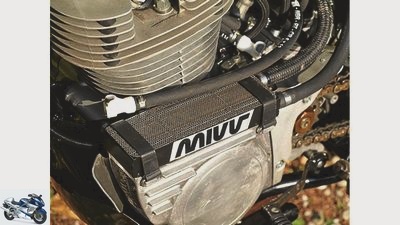
Nennewitz
11/18
A protected mounted oil cooler for the thermal health of the ancient single cylinder.
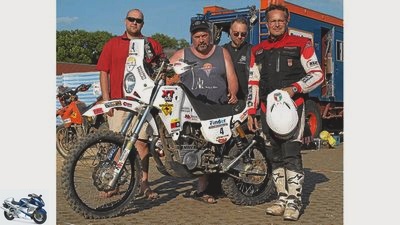
Nennewitz
12/18
Without a reliable team, the Dresden-Breslau rally is almost impossible for the driver and the machine.
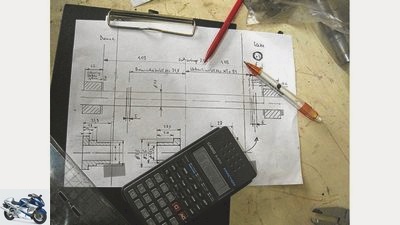
Nennewitz
13/18
The beginning of self-construction: Measurements are made into drawings, based on which sockets and sleeves.
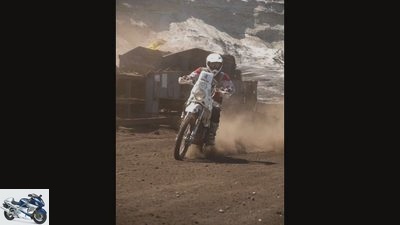
Nennewitz
14/18
It just works: Klaus Nennewitz and his team have done a good job.
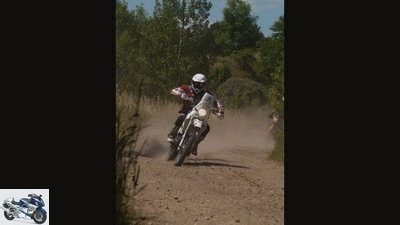
Nennewitz
15/18
Even at full throttle, the old XT holds up like a young hop.
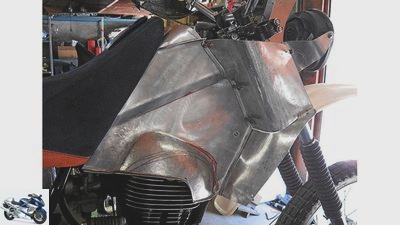
Nennewitz
16/18
The aluminum sheet metal parts are exquisite craft.
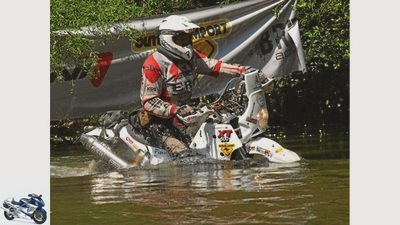
Nennewitz
17/18
The XT 500 was also immune to the deep water passage shortly before the destination.
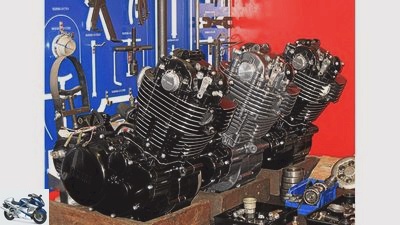
Nennewitz
18/18
The operational motor stands in the middle, uncoated; it comes from the SR 500 and is given preference over the real XT engines because of the larger inlet valve and the 12 volt generator.
Final: self-made rally Yamaha XT 500
The maiden voyage of a rally machine
The man builds himself, thought motorcycle designer Klaus Nennewitz and created his very special rally machine with a lot of know-how and competent help. At the Dresden-Breslau rally, the duo experienced an eventful maiden voyage.
The Rallye-XT-500 is not my childhood dream, definitely not. As a teenager, I had papered the walls of my room with posters of motocross stars from the USA. They drove motorbikes with water cooling, disc brakes and mono-spring struts. XT-500 drivers were utterly uncool, either grandfather or hyper-alternative.
But my career as a designer for the motorcycle industry has made me receptive to the charm of the XT, which unfolds with pleasantly muffled exhaust music when cruising on gravel, aside from red pencil and marketing strategies. The friendship with the Dutch Paris-Dakar driver Henno van Bergeijk, who in 2006 on a slightly modified XThe T 500 crossed the finish line last, doing the rest: I decide to set up a rally XT and drive Dresden-Breslau with it.
Buy complete article

Final: self-made rally Yamaha XT 500
The maiden voyage of a rally machine
Nennewitz
At the Dresden-Breslau rally, the XT not only has to work its way through deep water but also through deep sand.
The night before the TÜV appointment, the engine runs for the first time, and after the test engineer has popped in for half an hour the next day, he enters all the changes. There is only one day left for test drives including urgently needed improvements to the fuel supply and electrics. Because the coordination of the fork, which is practically free of damping, and the struts that work much too tough, do not harmonize, I order other springs directly from Dresden. They are installed quickly, but starting the engine becomes a drama that runs through the entire rally.
I feel my way through the show prologue on a disused exhibition center near Dresden with the utmost care with the XT. Nevertheless, or perhaps because of it, the machine sinks into the first of the artificially created mud holes. But I’d rather get drunk than let go of the accelerator and clutch and the engine might die in the process.
It’s going to be a lot harder. Another round of the exhibition grounds, then a 700-kilometer connection stage on asphalt and finally a 100-kilometer special stage are the program for the next day. In the camp in Poland, when the XT service is at one o’clock in the morning, panic arises. After 150 kilometers off-road, a number of screws have come loose, some are missing completely and the battery is inflated like a balloon. Because of all the restlessness, I cannot sleep during the rest of the night, which is far too short. Tomorrow there are 200 kilometers on the rollercoaster-like tank slopes of Polish military areas. At least I manage to suppress the tears of exhaustion up to 50 kilometers from my destination. Then I also run out of gas and after crossing the finish line I go to sleep for two hours with black thoughts about giving up.
Nennewitz
Without a reliable team, the Dresden-Breslau rally is almost impossible for the driver and the machine.
That gives me back energy and motivation. Especially now. Fortunately, there are slopes without supercross-like difficulties, and I adapt my driving style better and better to the damper settings. But the kickstart remains a nightmare, especially when I sink my XT into the swamp just five meters from a checkpoint to the bench. With the help of a few photographers, some tree trunks from the forest and a tow rope, I heaved and dragged the XT out of the mud again after three quarters of an hour. But it just doesn’t start. Rescue is approaching in the form of last year’s winner Robert Leischner, who first also sinks into the mud and then tows me. I serve him as a tour guide for the remaining 90 kilometers of the stage because his navigation instruments are over.
I’m getting better and better at the XT. The evening service is reduced to changing the filter and checking the most important components and screw connections. It almost seems to me that I can also get the kicking under control. During the 560 kilometer long marathon stage, I am the only one to find the mobile line through a ford, only to throw the machine a few meters further like a stone into the next water passage.
It takes a good hour for it to work again. Then the instruments fail and now it’s me who has to follow the others through a gigantic cloud of dust in the backlight of the low evening sun in order to reach the finish line before dark.
The topic of water passage remains until the end. On the last 50 meters of the 1,800-kilometer route, a river gets in our way. Most of the colleagues are up to their hips in the water and try to show me the right way. Together we fight our way through and then we take a collective relaxation bath. This time voluntarily.
Technical specifications
Nennewitz
The engine is in the middle, uncoated; it comes from the SR 500 and is given preference over the real XT engines because of the larger inlet valve and the 12 volt generator.
Engine:
Air-cooled single-cylinder four-stroke engine, two valves, operated by a camshaft via rocker arms, bore x stroke 90 x 84 millimeters, 540 cm3, approx. 27 kW (37 HP) at 5700 rpm, Mikuni rotary slide carburetor, opening 36 mm, oil cooler , Kick starter, oil bath clutch, primary drive via gears, five-speed gearbox, chain drive.
Landing gear:
Single-loop tubular frame with double steel beams, telescopic fork at the front, two-arm swing arm with two spring struts at the rear, single-disc brake with double-piston floating caliper at the front, single-disc brake with single-piston floating caliper at the rear, 21"-Wire spoke wheel front / 18"-Wire spoke wheel at the rear.
Measurements and weight:
Weight (dry) approx. 145 kg, tank capacity 29 liters.
Price:
Standard-XT 500 5508 Mark (1982), Rallye-XT 540 over 20,000 euros (material and labor)
Related articles
-
Endurance test final balance Yamaha XT 660 X
Bilski endurance test final balance of the Yamaha XT 660 X The tent travelers Thirty years after their debut, the youngest generation of the Japanese …
-
Endurance test final balance of the Yamaha YZF-R1
22 pictures Yamaha 1/22 Yamaha 2/22 Yamaha 3/22 Yamaha 4/22 Yamaha 5/22 Yamaha 6/22 Yamaha 7/22 Yamaha 8/22 Yamaha 9/22 Yamaha 10/22 Yamaha 11/22 Yamaha …
-
Endurance test interim balance of the Yamaha XT 1200 Z Super Tenere
Photo: j.kuenstle.de 20 images 1/20 The Yamaha XT 1200 Z Super Tenere doesn’t care about the goals: whether for camping in the Allgau, in a hotel in northern Germany or for …
-
Yamaha MT-09 Street Rally ABS under test
fact 10 pictures fact 1/10 fact 2/10 fact 3/10 fact 4/10 fact 5/10 fact 6/10 fact 7/10 Well recognizable in profile: the higher bench that …
-
On the move with Kawasaki GPZ 900 R and Yamaha FJ 1100
fact 39 pictures fact 1/39 Hurry with a while, always slowly with the young horses – sayings like these were definitely not up for debate when the …
-
Driving report Yamaha XT 660 Z Tenere
2snap 23 photos Yamaha 1/23 Yamaha 2/23 Yamaha 3/23 Yamaha 4/23 Yamaha 5/23 Yamaha 6/23 Yamaha 7/23 Yamaha 8/23 Yamaha 9/23 Yamaha 10/23 Yamaha 11/23…
-
Short test Yamaha XVZ 1300 AT Royal Star Tour Classic
Short test Yamaha XVZ 1300 AT Royal Star Tour Classic revamped Front window, chrome all over and leather case under Sissy’s bar at the back – with good …
-
10 pictures Jorg Kunstle 1/10 Cult again today: The small lockable utensil box at the rear under the dainty luggage rack only had …
-
Ducati Hypermotard, MV Agusta Rivale 800, Yamaha MT-09 Street Rally in the test
Bilski 33 pictures Bilski 1/33 Supermotos? Do the Ducati Hypermotard, the MV Agusta Rivale 800 and the Yamaha MT-09 Street Rally really still go …
-
Yamaha Deus Swank Rally 700 – conversion based on XSR 700
Yamaha / Deus Ex Machina 7 pictures Yamaha / Deus Ex Machina 1/7 Deus Ex Machina has a new bike for the Yard-Built project from Yamaha …